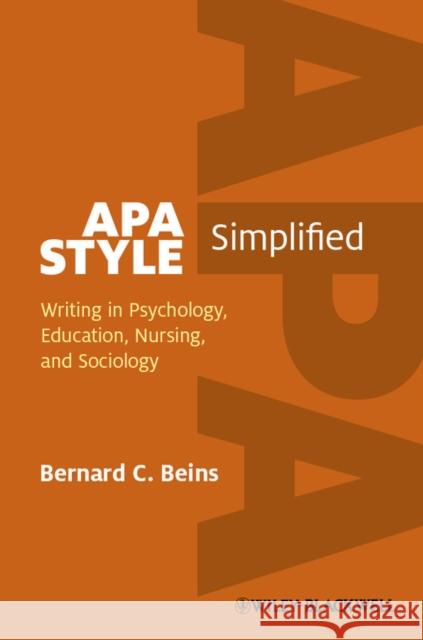APA Style Simplified: Writing in Psychology, Education, Nursing, and Sociology » książka
topmenu
APA Style Simplified: Writing in Psychology, Education, Nursing, and Sociology
ISBN-13: 9780470672327 / Angielski / Twarda / 2012 / 216 str.
APA Style Simplified: Writing in Psychology, Education, Nursing, and Sociology
ISBN-13: 9780470672327 / Angielski / Twarda / 2012 / 216 str.
cena 399,74
(netto: 380,70 VAT: 5%)
Najniższa cena z 30 dni: 395,65
(netto: 380,70 VAT: 5%)
Najniższa cena z 30 dni: 395,65
Termin realizacji zamówienia:
ok. 30 dni roboczych
Dostawa w 2026 r.
ok. 30 dni roboczych
Dostawa w 2026 r.
Darmowa dostawa!
This is a compact but comprehensive guide to writing clearly and effectively in APA style.
- Demonstrates how to write objective scientific research papers using interesting prose
- Incorporates guidelines from the 6th edition of the APA publication manual
- Explores how to develop ideas, connect them to what others have written, and express them clearly
- Discusses the differences between written, oral, and poster presentations and offers instructions for applying APA style to each











